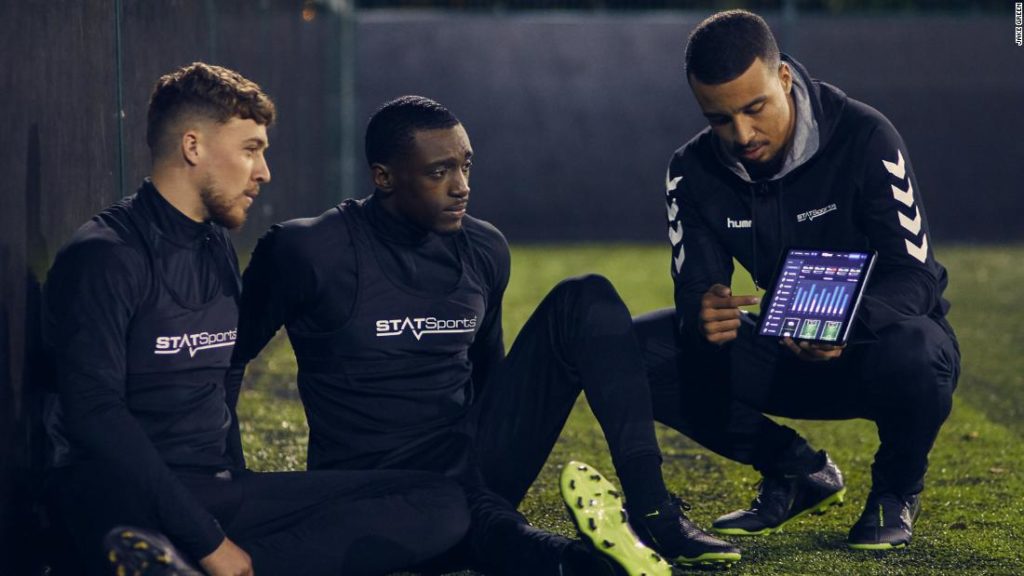Until recently, gathering athletes’ performance data was a laborious process. Coaches and sports scientists would spend hours compiling information from games and training sessions, pulling out the information relevant to their players’ development. But technology-based performance analytics has changed all that.
These days, athletes can wear devices or vests with GPS-tracking capabilities that record the speed and distance they run, as well as the impacts on their body. The information helps coaches develop training plans to avoid athlete fatigue and maximize performance for match days.
STATSports, a company based in Northern Ireland, is a leader in the performance analytics industry. Most teams in the English Premier League (EPL) use its technology, as do top rugby and American football teams.
“When we started the company 12 years ago, this technology was in its infancy,” STATSports co-founder Sean O’Connor told CNN Business. “Now, it’s common throughout most sports at all levels and it’s now about being able to get the maximum from it.”
Player performance
Tom Allen has been Arsenal Football Club’s lead sport scientist since 2017. He says players, as well as coaches, are now showing an interest in performance data.
“When I first started, no one [player] was really too bothered about these statistics,” he said. “Now, everyone is used to seeing information sent to the phones and they take a key interest in how they’re improving.
“The elite athletes, they’re always very competitive. They want to know, ‘why is someone doing more than me? I should be doing more than that,’ and they’re pushing each other.”
Over the past year, the technology has also been used to track performance away from the training ground. As the United Kingdom went into lockdown in March 2020, and the English Premier League was temporarily suspended, clubs used STATSports devices to keep track of their players as they trained remotely.
“We went through a very tough regime to try and get them ready for what was going to come along the line post-Covid,” Allen explained. “We had a leader board within the group and we teamed everyone up together and you saw the competition go through the roof.”
While the league was suspended, STATSports compiled a “player proximity report” that showed how much time during training sessions players spent within two meters of each other — the minimum distance recommended by the government’s social distancing policy. The EPL presented the data to the government as part of its efforts to restart the league.
Filtering down
Companies such as Australia’s Catapult — which also works with EPL teams — and STATSports have developed systems targeted at the amateur market, letting users compare their performance to their peers and to professionals.
“You can create a league with your friends, you can compare yourself to the elite pros as well, and gauge where you are in relation to that,” says O’Connor. “There’s a huge appetite for that and it’s growing.
“That underbelly of kids and youth football players is where the next wave of technology advances will come.”
You may also like
-
Super League: UEFA forced to drop disciplinary proceedings against remaining clubs
-
Simone Biles says she ‘should have quit way before Tokyo’
-
Kyrie Irving: NBA star the latest to withhold vaccination status
-
Roger Hunt: English football mourns death of Liverpool striker and World Cup winner
-
‘Every single time I lift the bar, I’m just lifting my country up’: Shiva Karout’s quest for powerlifting glory

